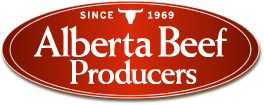
Source: Alberta Beef Producers
“Surveillance of E. coli, enterococci, antimicrobial resistance (AMR) and Enterococcus species distribution in beef operations and associated environments”
Project No.: FOS.10.13
Lead Researchers: Tim McAllister, Ph.D., Agriculture and Agri-Food Canada
Other Researchers: Sheryl Gow, D.V.M., Ph.D. and Richard Reid-Smith, D.V.M., D.V.Sc. (Public Health Agency of Canada), Trevor Alexander, Ph.D. and Mueen Aslam, Ph.D. (Agriculture and Agri-Food Canada), Ron Read, M.D., Ph.D. (University of Calgary), Calvin Booker, D.V.M and Sherry Hannon, D.V.M., Ph.D. (Feedlot Health Management Services), Sylvia Checkley, D.V.M., Ph.D. (University of Calgary), Lisa Tymensen, Ph.D (Alberta Agriculture and Rural Development) and Patrick Boerlin, D.V.Sc. (University of Guelph)
Objectives:
1. To determine how AMU in beef cattle potentially contributes to antimicrobial resistance (AMR);
2. To determine the prevalence of indicator bacteria (E. coli and enterococci) in feedlot cattle and downstream drainage basins to identify the potential chain of transmission within these environments.
Background:
Public concern to antimicrobial use (AMU) and resistance (AMR) in livestock is increasing, as is continuing pressure for industries and governments to address these concerns. Science-based, epidemiologically sound research is critical for sound industry policy and communication, legislation, and educated consumer choices.
What They Will Do:
This study will focus on antimicrobials classified as being of high and very high importance in human medicine. AMU records will be collected from Alberta feedlots. E. coli and enterococci will also be isolated from bovine feces, manure drainage/catchment basins at feedlots, downstream surface water and retail beef, and compared to isolates obtained from human clinical samples. The zoonotic potential of these species and any link between AMU in livestock and humans colonized by antibiotic resistant enterococci will be examined. Advanced genotyping techniques will be used to evaluate similarities and differences between enterococci species isolated from cattle and humans, as well as the genetic sequences of genes associated with AMR in cattle and human clinical cases.
Implications of the Research:
This study will provide insights into the relationships between AMU in feedlot cattle, the nature of AMR bacteria in cattle, and the possible spread of pathogens and AMR bacteria in downstream environments. These results will help to identify appropriate on-farm intervention points for the control of AMR in feedlots, and help to decipher and quantify the association between AMU and AMR in Canada’s beef production system with AMR in humans. This continues the leadership role that the Canadian beef industry has taken in promoting and quantifying good antimicrobial stewardship within feedlot production systems.









